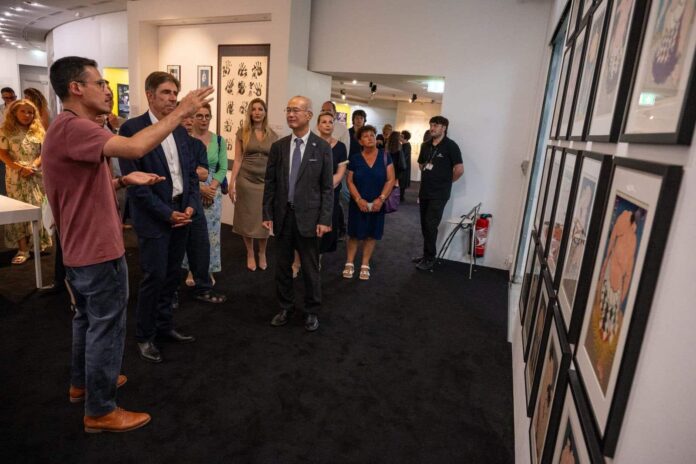Until February 1, 2026, the departmental museum of Asian arts in Nice is hosting the exhibition Sumō: the absolute balance. An immersion to trace the history of these athletes from the Edo period (1603-1868) to today.
As a symbol of Franco-Japanese friendship since 1998, the art institution aims to catch the eye of all those curious about the history of these powerful rikishi (the wrestlers with strict, intensive training and communal ritual meals, editor’s note).
Two artists are central to the documentation, Philippe Marinig, a French photographer, and Kinoshita Daimon, a Japanese master of contemporary woodblock prints. The two artists organize the exhibition with over 150 pieces on display, including photographs, prints, ritual objects, and visual archives.
Nearly 40 prints and paintings by the Japanese artist have been created by Daimon Kinoshita, born in 1946 in Teshikaga, on the island of Hokkaido, in northeastern Japan. Tasked with capturing the iconic figures of sumo for the Tokyo Hanga-in, he uses traditional techniques for his detailed prints. On the other hand, Philippe Marinig, born in 1962 in Château-Saint-Auban in the Alpes-de-Haute-Provence, took 80 shots in the athletes’ stables in Tokyo.
The Daily Life of Wrestlers
The trainings of the rikishi are detailed to the exact millimeter. The daily life of a rikishi, a sumo wrestler, combines technique and balance. One work presents the daily life of the wrestlers, based on the accounts of Philippe Marinig.
For 18 years, the French photographer followed in the heya, training houses where the athletes, often young, live under extreme discipline and structured hierarchy. At dawn, the athletes devote their training to flexibility and fighting techniques. Once the training is done, they clean the stable and prepare lunch meals. A meat, fish, and vegetable soup, the chanko-nabe, is consumed to gain weight. To optimize weight gain, it is recommended to include a nap during the day, followed by special attention to household tasks and body care.
Traditional Silk Garb
Recognizable by their sole outfit, the athletes have only one item in their wardrobe: a silk loincloth or mawashi in Japanese, which they wrap around their loins and between their legs. It is the only clothing allowed during the fights, and it also constitutes the only solid grip possible during the combat. On the website of the department of the Alpes-Maritimes, you will find activities to do on-site. Guided tours, origami, engraving, and kamishibai workshops are available for discovery.


